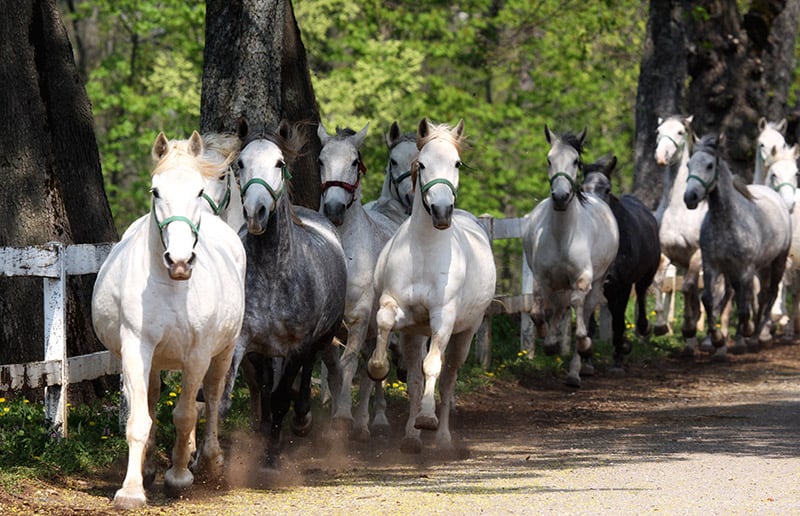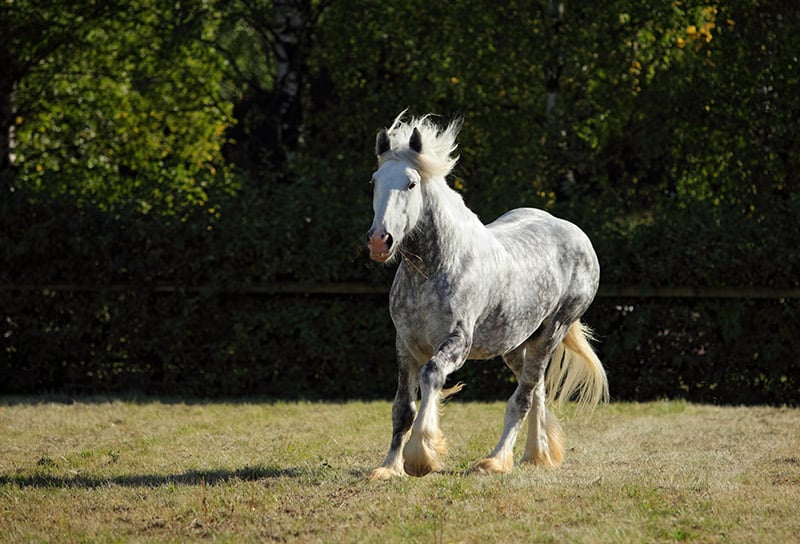Horses are large active animals that need a good amount of exercise every day to stay health and fit!
A free-roaming horse will get its exercise easily. It will naturally walk, trot, and occasionally lope about as the mood strikes. In an open environment, they will often travel many miles in a single day. But when horses are kept in a small or confined area rather than a pasture, field, or other large enclosed space, they don’t get enough exercise and can become unruly.
Many equestrions today simply don’t have access to large open spaces, or may simply keep their horses in smaller areas for easier access. To keep your horse healthy and fit, as well as cooperative, you need to make sure to provide a regular daily exercise routine.
Horse activities are important for mental stimulation and to keep your horse in shape. These can include both horseback riding and horse training. The best way to keep your horse healthy is with a horse workout that exercises him frequently and moderately. A horse training program with basic exercises will not only promote good horse health, but will improve your horse’s skills, strength, and confidence.
Horse Workouts
All horse workouts should begin with at least five minutes of walking to warm up his muscles. The workout should end with about the same. When you first start working a horse after he has sat for a while, start slowly with a lot of walking and trotting for a half hour or so. Then slowly start building up to more trot and canter.
As your horse workouts progress from day to day, start lengthening the length of the workout. This will strengthen his bones, muscles, ligaments, and tendons. These need to be kept strong so that they can handle the work demanded of them.
You want to avoid letting a horse sit for days and then giving him a hard workout. This can lead to injury.
It is also important to be aware of the footing you are working on. Trotting or cantering on hard ground can cause extra concussions on a horse’s legs, leading to unsoundness.

Horse Fitness
You can monitor your horse’s level of fitness by the intensity of his breathing during work and how long it takes his breathing to return to normal after work. If you want a more precise measurement, you can take your horse’s pulse right after work and again 10 minutes later. A very fit horse will have his pulse below 70 beats per minute after 10 minutes.
Horse Conditioning
If you are trying to condition your horse for competition, there are several techniques you can use to make a workout more strenuous. You can work your horse up and down hills, although this should not be done every workout. Riding your horse a mile uphill is much more strenuous than a mile on flat ground.
Galloping is great for getting the heart and lungs in shape and also good for conditioning the legs. A galloping workout should be structured as follows to prevent injury:
- one mile walk
- one mile trot, at least, to get him thoroughly warmed up
- 1-2 miles gallop
- And then 1-3 miles walk to cool him out
Working in water can also be very good for the heart and lungs and has a low impact on the horse’s legs and joints. Do not expect your horse to go into the water the first time. You must practice this. Start with getting him to walk through puddles and then through shallow water.
Avoid too much circle work such as longeing because it puts extra strain on his legs. Working in deep sand such as in washes can be useful for conditioning the legs of older horses, but is not recommended for young horses because it can lead to sprains and bowed tendons.
Featured Image Credit: horsemen, Shutterstock
